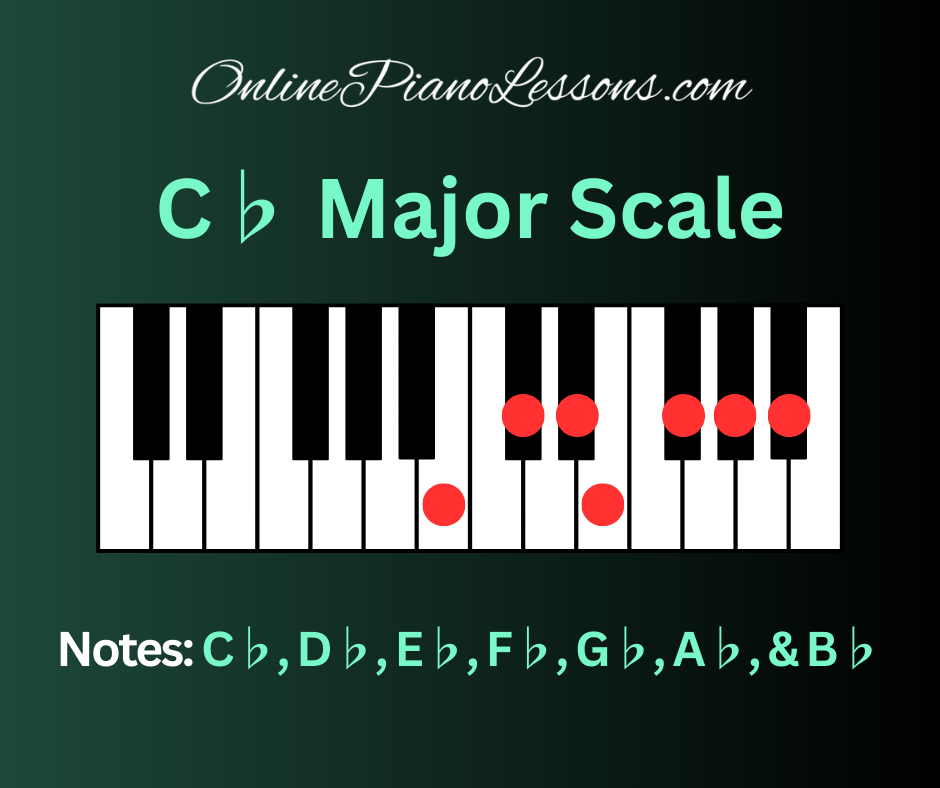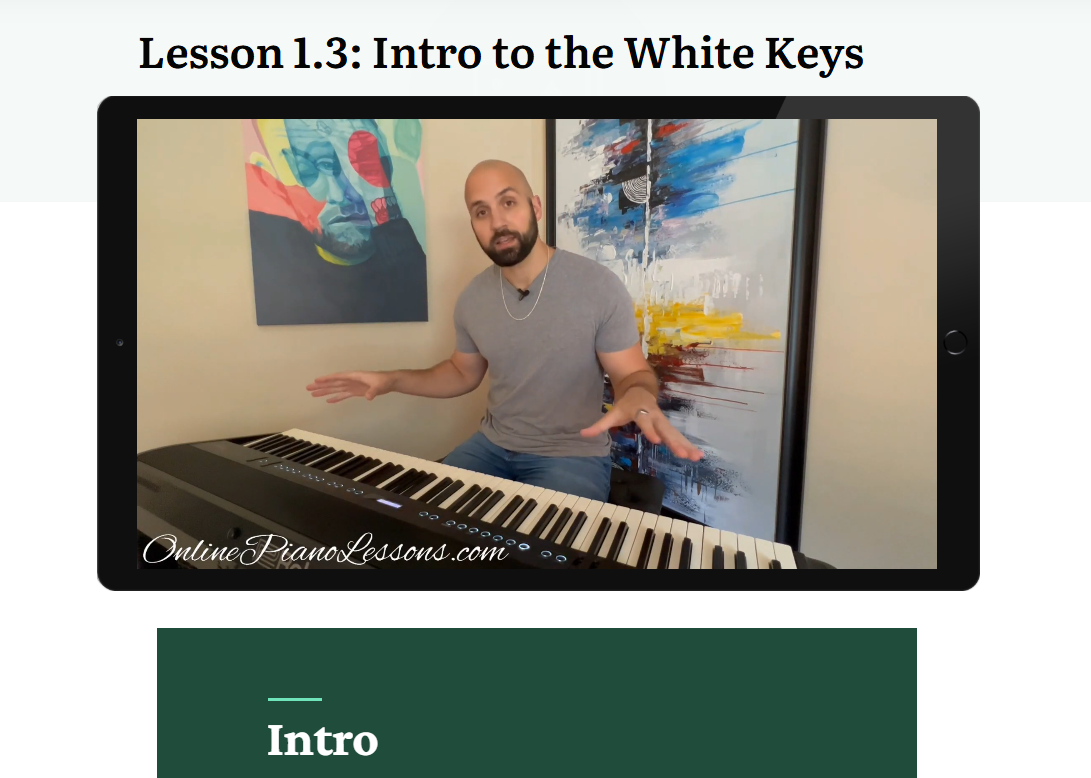
The C flat major scale is one of the more unusual and theoretical scales in music, but it plays an important role in understanding key signatures and advanced music theory on the piano. Although often enharmonically equivalent to B major, the C♭ major scale has its own unique notation and can appear in scores that adhere to specific compositional conventions. Learning the C flat major scale helps pianists deepen their understanding of flats, enharmonic equivalents, and keyboard navigation.
In this definitive guide, we will explore what the C flat major scale is, how to locate it on the piano, its theoretical structure, how it sounds, and practical tips for mastering it.
What Is the C Flat Major Scale?
The C flat major scale is a diatonic major scale that begins on C♭ and follows the same interval pattern as all major scales: Whole – Whole – Half – Whole – Whole – Whole – Half. Its key signature contains seven flats: C♭, D♭, E♭, F♭, G♭, A♭, and B♭. This means every note in the scale is a flat note.
The notes of the C♭ major scale are:
- C♭
- D♭
- E♭
- F♭
- G♭
- A♭
- B♭
- C♭ (octave)
Because F♭ is enharmonically equivalent to E natural, and C♭ is equivalent to B natural, pianists often find this scale conceptually tricky. However, practicing the C♭ major scale is an excellent exercise in understanding advanced music notation and flat-heavy keys.
How to Find the C Flat Major Scale on the Piano
On the piano, the C flat major scale is essentially the same as the B major scale in terms of keys pressed, but the notation differs:
- C♭ = B
- D♭ = C#
- E♭ = D#
- F♭ = E
- G♭ = F#
- A♭ = G#
- B♭ = A#
To play the C♭ major scale on the piano, start on B (C♭) and follow this sequence of white and black keys:
- C♭ (B)
- D♭ (C#)
- E♭ (D#)
- F♭ (E)
- G♭ (F#)
- A♭ (G#)
- B♭ (A#)
- C♭ (B octave)
Although the physical keys match B major, reading the scale as C♭ major helps train the eyes for notation-heavy or classical scores.
Why the C Flat Major Scale Matters
While the C♭ major scale may not be frequently used in everyday compositions, it is significant for several reasons:
- It deepens your understanding of flats and enharmonic equivalents
- It improves sight-reading skills for advanced sheet music
- It reinforces knowledge of major scale structure on the piano
- It prepares pianists for scores in flat-heavy keys, common in classical compositions
- It strengthens hand coordination over black and white keys
Learning the C♭ major scale makes navigating other complex flat-based scales, such as G♭ major or D♭ major, much easier.
Chords Derived from the C Flat Major Scale
The C♭ major scale contains seven diatonic chords:
- I (C♭ major): C♭ – E♭ – G♭
- ii (D♭ minor): D♭ – F♭ – A♭
- iii (E♭ minor): E♭ – G♭ – B♭
- IV (F♭ major): F♭ – A♭ – C♭
- V (G♭ major): G♭ – B♭ – D♭
- vi (A♭ minor): A♭ – C♭ – E♭
- vii° (B♭ diminished): B♭ – D♭ – F♭
These chords are useful for practicing harmonization, chord progressions, and improvisation in flat keys. Understanding the chords in the C♭ major scale also reinforces music theory concepts such as chord functions and voice leading.
How the C Flat Major Scale Sounds
Although rare, the C♭ major scale has the same tonal quality as B major:
- Bright
- Cheerful
- Harmonically rich
- Smooth
- Elegant
Playing it on the piano helps pianists experience a wide range of tonal possibilities, even in less commonly used keys. Practicing this scale strengthens coordination and improves familiarity with all flats.
Famous Pieces Involving C Flat Major
While compositions specifically in C♭ major are uncommon, some classical composers use it to maintain theoretical clarity in compositions with multiple flats:
- Beethoven occasionally uses C♭ major passages in his larger orchestral works
- Bach’s theoretical exercises in Well-Tempered Clavier cover all major keys, including C♭ major
- Modern jazz musicians sometimes write in C♭ major to avoid accidentals in complex arrangements
Studying these works allows pianists to see practical applications of the scale and enhances fluency in reading flat-heavy keys.
How to Practice the C Flat Major Scale on the Piano
Practicing the C♭ major scale requires precision and focus due to the flat-heavy notation. Here are some tips:
1. Use Correct Fingering
Right Hand (one octave): 2 – 3 – 1 – 2 – 3 – 4 – 5 – 1
Left Hand (one octave): 5 – 4 – 3 – 2 – 1 – 3 – 2 – 1
2. Start Slowly
Focus on accuracy and clarity rather than speed. Precision is essential for flat-heavy keys.
3. Use a Metronome
Practicing with a metronome strengthens timing and rhythm.
4. Hands Separately First
Build finger independence and coordination before combining hands.
5. Include Arpeggios
Arpeggios based on the C♭ major scale enhance finger agility and harmonic understanding.
6. Practice Sight-Reading
Look for sheet music in C♭ major to strengthen the ability to read and interpret flat-rich scores.
Common Mistakes with the C Flat Major Scale
Even advanced pianists can stumble with the C♭ major scale:
- Confusing flats with sharps or natural notes
- Using inconsistent fingering
- Skipping practice of arpeggios
- Neglecting proper wrist positioning
- Overlooking the scale’s enharmonic equivalence to B major
Avoiding these mistakes will improve fluency and confidence when playing this rare but important scale.
Why Pianists Should Learn the C Flat Major Scale
Learning the C♭ major scale offers benefits that go beyond playing this specific key:
- Deepens understanding of music theory and enharmonics
- Strengthens hand coordination and finger independence
- Enhances sight-reading skills for flat-heavy keys
- Prepares pianists for advanced classical or jazz compositions
- Improves improvisation and harmonic awareness
Mastering the C♭ major scale makes navigating all other scales on the piano easier and more intuitive.
FAQ
How many flats are in the C♭ major scale?
The C♭ major scale has seven flats: C♭, D♭, E♭, F♭, G♭, A♭, and B♭.
Is C♭ major the same as B major?
Yes. The notes are enharmonically equivalent, meaning they sound the same but are written differently.
What chords are derived from the C♭ major scale?
The main chords are C♭ major, D♭ minor, E♭ minor, F♭ major, G♭ major, A♭ minor, and B♭ diminished.
Why learn the C♭ major scale if it’s rare?
It reinforces music theory, sight-reading, and familiarity with all flats on the piano.
Can the C♭ major scale be used for improvisation?
Yes. Pianists can improvise using its notes and corresponding chords, especially in classical and jazz contexts.





 Hi, I'm Thomas, Pianist Composer,
Hi, I'm Thomas, Pianist Composer,  I love playing piano, creating new melodies and songs, and further developing my online piano course and making updates/additions to my site OnlinePianoLessons.com!
I love playing piano, creating new melodies and songs, and further developing my online piano course and making updates/additions to my site OnlinePianoLessons.com!  Now that is what I call fun!
Now that is what I call fun!





